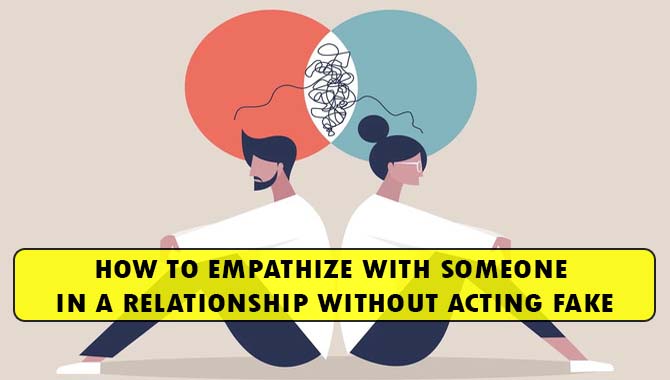The best emotional intimacy therapy focuses on improving communication, fostering vulnerability, and building trust to create deeper connections. It involves learning active listening skills, expressing needs clearly, and understanding each other’s emotional worlds through various therapeutic approaches tailored to individual or relationship needs.
Have you ever felt a bit distant from the people you care about most? Maybe your friendships feel superficial, or your romantic relationship seems stuck in a rut. It’s easy to feel this way when the deepest parts of ourselves aren’t truly shared or understood. Emotional intimacy is like the secret sauce that makes relationships thrive, turning casual acquaintances into best friends and ordinary couples into soulmates. But building it isn’t always straightforward. It can be frustrating when you want closer connections but don’t know where to start. The good news is that improving emotional intimacy is absolutely achievable. We’ll explore proven ways to deepen your connections, making hearts feel closer and conversations more meaningful, step by step.
Understanding Emotional Intimacy: The Foundation of Connection
Emotional intimacy isn’t just about liking someone; it’s about feeling truly seen, heard, and understood at your core. It’s the ability to be vulnerable, to share your deepest thoughts, fears, and joys without judgment. Think of it as the warmth and comfort you feel when you can be your authentic self with someone. This profound connection is what transforms relationships from acquaintanceships into lasting bonds. It’s built on trust, mutual respect, and a genuine desire to know and be known by another person.
When emotional intimacy is strong, you feel a unique sense of safety and belonging. Conversations flow easily, silences are comfortable, and you can navigate disagreements with grace because you know the underlying bond is strong. It’s the feeling that someone truly gets you, even when you’re not at your best.
Why is Emotional Intimacy So Important?
The importance of emotional intimacy cannot be overstated. It’s the bedrock of fulfilling relationships, whether romantic, platonic, or familial. When we feel emotionally connected, we experience:
- Greater Happiness and Well-being: Deep connections are linked to higher levels of life satisfaction and reduced feelings of loneliness. Humans are social creatures, and genuine connection is vital for our mental and emotional health.
- Stronger Resilience: In times of stress or hardship, emotionally intimate relationships provide a crucial support system, helping individuals cope with challenges more effectively. Knowing you have someone in your corner makes tough times more bearable.
- Improved Communication: When you’re emotionally intimate with someone, you tend to communicate more openly and honestly. You feel safe enough to express your needs, feelings, and concerns, leading to fewer misunderstandings.
- Deeper Trust: Vulnerability is a key component of emotional intimacy. When you share your true self and that vulnerability is met with acceptance and care, trust blossoms, forming a powerful foundation for any relationship.
- Personal Growth: Understanding and being understood on an emotional level encourages self-awareness and personal development. Being in a supportive, intimate relationship can inspire you to explore new aspects of yourself.
Conversely, a lack of emotional intimacy can lead to feelings of isolation, dissatisfaction, and conflict, even in relationships that appear stable on the surface. It can manifest as superficial conversations, a sense of emptiness, or a persistent feeling that something is missing.
Common Challenges to Emotional Intimacy
Many factors can make building and maintaining emotional intimacy difficult. Understanding these common hurdles is the first step toward overcoming them:
- Fear of Vulnerability: Opening up can be scary. Past hurts, fear of rejection, or a feeling of being judged can make people hesitant to share their true selves.
- Poor Communication Skills: Not knowing how to express feelings effectively, or not knowing how to listen empathetically, can create barriers. This includes passive-aggressive behavior, defensiveness, or simply shutting down.
- Lack of Trust: Trust is earned over time, and breaches of trust can be incredibly damaging. Without a solid foundation of trust, true emotional intimacy is hard to achieve.
- Busyness and Distraction: In our fast-paced world, it’s easy to let relationships slide. Time spent together may be superficial, dominated by distractions like phones or work, rather than genuine connection.
- Unresolved Conflicts: Lingering resentments or ongoing arguments can build walls between people, making it difficult to feel close or safe enough to be vulnerable.
- Different Attachment Styles: People have different innate ways of relating to others based on early life experiences. These differing styles (e.g., secure, anxious, avoidant) can sometimes create friction if not understood and navigated with care.
Recognizing these challenges in yourself or your relationships is not a sign of failure, but an opportunity for growth and deeper connection. Many individuals find that specific therapeutic approaches can provide the tools and support needed to navigate these complexities.
The Best Emotional Intimacy Therapy: Proven Solutions
Emotional intimacy therapy isn’t a one-size-fits-all solution. Instead, it’s an umbrella term for various therapeutic approaches that help individuals and couples develop the skills and understanding needed to build deeper emotional connections. The “best” therapy is the one that resonates with you and addresses your specific needs.
Here are some of the most effective therapeutic modalities and strategies that fall under the umbrella of emotional intimacy therapy:
1. Emotionally Focused Therapy (EFT)
Emotionally Focused Therapy (EFT) is a highly respected and evidence-based approach, particularly effective for couples. Developed by Drs. Sue Johnson and Les Greenberg, EFT focuses on identifying and changing negative interaction patterns and emotional responses that create distance. The core idea is to help partners understand their attachment needs and create new, more secure emotional bonds.
Key elements of EFT include:
- Identifying Negative Cycles: Partners learn to recognize recurring patterns of conflict or withdrawal (e.g., one partner pursues, the other withdraws).
- Accessing Underlying Emotions: The therapy helps individuals access and express deeper, more vulnerable emotions (like fear, sadness, and longing) that are often hidden behind anger or defensiveness.
- Restructuring Interactions: By expressing these deeper emotions, partners can create new, positive emotional experiences with each other, leading to increased empathy and connection.
- Consolidating New Bonds: The goal is to create a secure emotional bond where partners feel safe, supported, and understood.
EFT is highly effective because it taps into our innate need for secure attachment. Research consistently shows high success rates for couples using EFT, often leading to lasting improvements in relationship satisfaction and emotional connection. You can learn more about the principles of EFT through resources like the International Centre for Excellence in Emotionally Focused Therapy (ICEEFT).
2. Gottman Method Couples Therapy
Developed by Dr. John Gottman and Dr. Julie Schwartz Gottman, the Gottman Method is another empirically supported approach that focuses on building and maintaining healthy relationships. It’s based on decades of research observing thousands of couples, identifying the specific behaviors and attitudes that lead to lasting love and preventing relationship failure.
The Gottman Method emphasizes:
- The Sound Relationship House: This model outlines nine components crucial for a strong relationship, including building love maps, fostering fondness and admiration, turning toward each other instead of away, and making dreams come true.
- Conflict Management: Instead of avoiding conflict, the Gottman Method teaches couples how to manage conflict constructively, focusing on repair attempts and understanding each other’s perspectives.
- Creating Shared Meaning: This involves developing a sense of shared purpose and life roles, creating rituals of connection, and supporting each other’s life goals and dreams.
- Building Trust and Commitment: Focuses on strengthening the fundamental elements of trust and unwavering commitment to the relationship.
The Gottman approach offers practical tools and strategies that couples can implement immediately. Their extensive research provides a clear roadmap for understanding what makes relationships work. For more on their work, visit The Gottman Institute (Gottman.com).
3. Systemic Therapy (Family Systems Therapy)
Systemic therapy views individuals not in isolation but as part of a larger system—typically their family or relationship dynamics. It examines how interactions, patterns, and unspoken rules within the system influence individual behavior and relationship health. This approach is particularly helpful when understanding recurring issues that seem to affect everyone in the unit.
Key aspects of Systemic Therapy:
- Focus on Patterns: Therapists look for recurring patterns of communication and behavior within the relationship or family.
- Understanding Roles: It helps identify the roles individuals play within the system and how these roles impact connection.
- Intergenerational Influence: Explores how family history and past generations’ patterns might be affecting current relationships.
- Shifting Dynamics: Aims to help the system change unhealthy patterns and establish more functional and emotionally supportive ways of relating.
This therapy is excellent for understanding how broader family or relationship dynamics might be impacting the ability to form emotional intimacy. It encourages a view of relationships as a connected entity where a change in one part affects the whole.
4. Psychodynamic Therapy
Psychodynamic therapy delves into the unconscious mind to understand how past experiences, particularly early childhood relationships, shape current relationship patterns and emotional responses. It focuses on exploring unresolved conflicts and inner complexities that might be hindering emotional intimacy.
Main goals of Psychodynamic Therapy:
- Exploring Unconscious Influences: Understanding how past experiences, traumas, and unmet needs affect present-day relating.
- Identifying Defense Mechanisms: Recognizing patterns of avoiding difficult emotions or situations (e.g., denial, projection).
- Working Through Past Hurts: Addressing unresolved emotional issues from past relationships that may impact current ones.
- Developing Self-Awareness: Gaining insight into one’s own emotional patterns and how they play out in relationships.
This approach is beneficial for individuals who feel stuck in repetitive negative patterns or struggle with deep-seated issues that prevent them from forming close bonds, even when they desire them.
5. Interpersonal Therapy (IPT)
Interpersonal Therapy (IPT) is a time-limited therapy that focuses on improving interpersonal relationships and functioning. It helps individuals understand how their relationships affect their mood and how their mood affects their relationships. IPT typically focuses on a few key areas:
- Role Disputes: Conflicts with significant people in your life.
- Role Transitions: Dealing with major life changes like new jobs, marriage, divorce, or grief.
- Interpersonal Deficits: Difficulty forming or maintaining satisfactory relationships.
- Grief: Complicated bereavement after the loss of a loved one.
IPT helps individuals develop better communication strategies, understand relationship dynamics, and build healthier connections by addressing specific interpersonal problems that lead to distress and isolation.
Practical Tools and Strategies for Building Emotional Intimacy
Beyond formal therapy, there are many hands-on strategies you can implement daily to cultivate emotional intimacy in your relationships.
1. Practice Active Listening
Active listening is more than just hearing words; it’s about truly understanding the speaker’s message, both verbally and non-verbally. It requires full concentration, encourages the speaker to continue, and shows you care about what they are saying.
How to practice active listening:
- Pay Attention: Put away distractions (phones, TV) and make eye contact.
- Show You’re Listening: Nod, use encouraging facial expressions, and offer verbal affirmations like “I see” or “Uh-huh.”
- Provide Feedback: Paraphrase what you heard (“So, if I understand correctly, you’re feeling…”) to ensure you’ve understood and to show you’re engaged.
- Ask Clarifying Questions: “Can you tell me more about that?” or “What did that feel like for you?”
- Defer Judgment: Avoid interrupting or offering unsolicited advice. Let the speaker finish their thoughts completely.
The goal is to make the other person feel heard and validated. This simple practice can dramatically improve understanding and connection.
2. Share Your Inner World: Vulnerability
Emotional intimacy thrives on vulnerability. This means sharing your thoughts, feelings, fears, and dreams, even when it feels a bit scary. It’s about letting your guard down and allowing someone to see the real you.
Tips for sharing:
- Start Small: You don’t need to reveal your deepest secrets immediately. Begin by sharing daily feelings or minor concerns.
- Be Specific: Instead of saying “I’m feeling bad,” try “I’m feeling anxious because of the upcoming presentation at work.”
- Express Needs: Clearly state what you need from the other person, whether it’s support, understanding, or just a listening ear.
- Be Consistent: Regularly sharing, even small things, builds a habit of openness.
When you share vulnerably and your partner responds with empathy, it creates a powerful bond of trust and closeness.
3. Schedule Dedicated Connection Time
In busy lives, intentional effort is needed to nurture relationships. Scheduling time specifically for connecting can make a significant difference.
Ideas for dedicated time:
- Weekly Check-ins: Set aside 30 minutes to an hour each week to talk about how you’re both doing, beyond just logistics.
- Date Nights/Friend Dates: Plan regular outings or at-home activities focused on conversation and shared enjoyment.
- Tech-Free Time: Designate periods where phones and other devices are put away, allowing for undivided attention.
- Shared Activities: Engage in hobbies or activities together that allow for relaxed conversation and shared experiences.
This intentionality signals that the relationship is a priority and provides consistent opportunities for emotional exchange.
4. Express Appreciation and Affection
Regularly acknowledging and appreciating your loved ones strengthens your bond. Expressing affection, whether through words, gestures, or physical touch, reinforces feelings of closeness and value.
Ways to show appreciation:
- Verbal Affirmations: “I really appreciate you helping me with X,” or “I’m so glad you’re in my life.”
- Acts of Service: Doing something thoughtful for them, like making them coffee or running an errand.
- Physical Touch: Hugs, holding hands, or a comforting pat on the back—if this is welcome and appropriate.
- Gifts: A thoughtful small gift can demonstrate you were thinking of them.
Focusing on the positive and expressing gratitude fosters a warm, supportive atmosphere conducive to intimacy.
5. Learn to Navigate Conflict Constructively
Conflict is inevitable in any relationship. What matters is how you handle it. Constructive conflict resolution involves addressing issues respectfully, aiming for understanding rather than winning.
Strategies for healthy conflict:
- Use “I” Statements: “I feel hurt when X happens” rather than “You always do X.”
- Focus on the Issue, Not the Person: Avoid personal attacks, name-calling, or bringing up past grievances.
- Take Breaks if Needed: If emotions run too high, agree to pause the conversation and revisit it when both parties are calmer.
- Seek to Understand: Listen to your partner’s perspective even if you disagree. Ask questions to clarify their feelings.
- Work Towards Solutions Together: Collaborate to find resolutions that work for both of you.
Learning to fight fair is a critical skill for maintaining and deepening emotional intimacy. It shows that you value the relationship enough to work through difficulties together.
Therapeutic Modalities vs. Self-Help Strategies: When to Choose What
Deciding whether to pursue formal therapy or focus on self-help strategies depends on the depth and nature of the challenges you’re facing.





